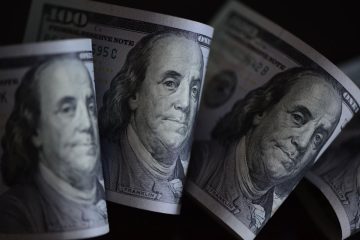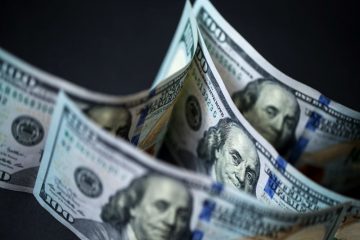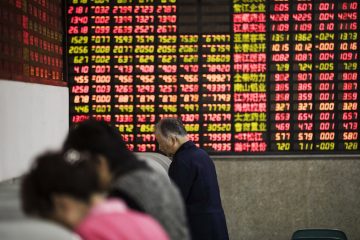| Symbol | Last | Change | % | High | Low |
|---|---|---|---|---|---|
| USD / SEK | 9.2071 | +0.0073 | +0.08% | 9.2112 | 9.1915 |
| Open Last Trade : 06:51 | GMT Time : Fri Jan 02 2026 06:51 | ||||
USD/SEK : Intraday Live Chart
USD/SEK : Technical Signal Buy & Sell
| 5 Min Signal | 1 Hour Signal | 1 Day Signal |
|---|---|---|
| Buy | Sell | Sell |
USD/SEK : Moving Averages
| Period | MA 20 | MA 50 | MA 100 |
|---|---|---|---|
| 5 Minutes | 9.20 | 9.20 | 9.20 |
| 1 Hour | 9.20 | 9.20 | 9.19 |
| 1 Day | 9.22 | 9.35 | 9.30 |
| 1 Week | 8.94 | 9.60 | 10.06 |
USD/SEK : Technical Resistance Level
| Resistance 1 - R1 | Resistance 2 - R2 | Resistance 3 - r3 |
|---|---|---|
| 9.2112 | 9.2211 | 9.2260 |
USD/SEK : Technical Support Level
| Support 1 - S1 | Support 2 - S2 | Support 3 - S3 |
|---|---|---|
| 9.1964 | 9.1915 | 9.1816 |
USD/SEK : Periodical High, Low & Average
| Period | High Change from Last | Low Change from Last | Average Change from Last |
|---|---|---|---|
| 1 Week | 9.2063 +0.0008 | 0.0000 +9.2071 | 9.1686 +0.0385 |
| 1 Month | 9.4368 -0.2297 | 0.0000 +9.2071 | 9.2663 -0.0592 |
| 3 Month | 9.5893 -0.3822 | 0.0000 +9.2071 | 9.2932 -0.0861 |
| 6 Month | 9.8021 -0.5950 | 0.0000 +9.2071 | 9.3989 -0.1918 |
| 1 Year | 11.3350 -2.1279 | 0.0000 +9.2071 | 9.6996 -0.4925 |
USD/SEK : Historical Chart
USD to SEK Exchange Rate History: The Krona’s Journey Through Neutrality, Inflation, and Global Shifts
The USD to SEK exchange rate reflects Sweden’s economic evolution from a stable Nordic welfare state to a globally integrated, export-driven economy. Over the past several decades, the Swedish krona (SEK) has transitioned from a semi-fixed system to a fully floating regime, enduring cycles of inflation, currency crises, monetary tightening, and EU-related pressures—all impacting its performance against the U.S. dollar.
Studying the USD/SEK history uncovers a rich timeline of economic policy reforms, global financial integration, and domestic priorities such as low inflation and fiscal prudence.
1970s–1980s: Pegged Currency, Oil Shocks, and Controlled Decline
In the 1970s, Sweden maintained a managed peg system. The krona was linked to a basket of currencies, including the U.S. dollar. However, global oil shocks, rising labor costs, and soft productivity led to persistent devaluations to support exports.
Throughout the decade, the USD/SEK rate moved from approximately 4.80 to 5.20, as the Swedish government devalued the krona multiple times.
The 1980s saw continued depreciation due to expansionary fiscal policies, inflation, and growing current account deficits. By the end of the decade, the krona traded around 6.00 per USD, still under a semi-pegged regime that came under strain.
1990s: Peg Breakdown, Financial Crisis, and Free Float
The early 1990s marked a turning point. Sweden experienced a banking and housing crisis, with GDP contracting sharply. At the same time, the fixed exchange rate came under speculative attack during the ERM crisis in Europe.
In 1992, Sweden abandoned its peg and allowed the krona to float freely. The USD/SEK jumped from 5.50 to over 8.00, reflecting market fears and capital flight.
However, Sweden implemented structural reforms, fiscal consolidation, and an inflation targeting regime under the Riksbank. By the late 1990s, confidence returned, and USD/SEK stabilized around 7.00, aided by a strong export rebound and credibility in monetary policy.
2000s: Export Boom, Euro Rejection, and Relative Krona Strength
In the early 2000s, Sweden remained outside the eurozone despite EU membership. A 2003 referendum saw Swedes vote to retain the krona, preserving monetary independence.
The krona benefited from a global commodities and tech boom, with strong export demand and robust public finances. USD/SEK declined steadily from 9.00 in 2001 to around 6.00 by 2008, signaling significant krona appreciation.
However, the 2008 global financial crisis disrupted this trend. Risk aversion spiked, and USD/SEK jumped above 8.00 as investors fled to the U.S. dollar. Sweden’s open economy proved vulnerable to falling global trade.
2010s: Recovery, Deflation Concerns, and Riksbank Intervention
The 2010s were marked by a strong recovery in Sweden, but persistent low inflation led the Riksbank to adopt negative interest rates—the first central bank to do so in 2015.
Initially, the krona held firm, but loose monetary policy eventually led to depreciation. USD/SEK climbed from 6.50 in 2011 to 9.50 by 2019, despite solid growth fundamentals. The weak krona supported exports but raised import costs and sparked criticism over its prolonged undervaluation.
Sweden’s independent currency helped insulate it from eurozone crises, but also introduced volatility in capital flows and currency speculation.
2020–2024: Pandemic, Rate Hikes, and External Pressures
During the COVID-19 pandemic, Sweden avoided harsh lockdowns, but global dynamics dominated currency moves. In 2020, the USD/SEK surged from 9.30 to 10.50, then fell as risk appetite returned.
The 2022 inflation shock, driven by energy prices and supply bottlenecks, forced the Riksbank to hike interest rates aggressively—moving from negative to positive rates rapidly. Still, the USD remained stronger due to faster Fed tightening.
In 2023 and early 2024, the USD/SEK hovered between 10.00 and 10.50, reflecting uncertainty over global interest rate normalization and Sweden’s slower disinflation.
As of April 2025, USD/SEK trades around 10.20, showing relative stability after years of high volatility. The krona remains a floating currency deeply sensitive to global liquidity trends and monetary divergence between Sweden and the U.S.
✅ Key:
🟢 = Krona appreciated vs USD
❌ = Krona depreciated vs USD
⚠️ = Minimal change / Range-bound
📊 USD to SEK Exchange Rate by Decade
| Decade | Avg. USD/SEK Rate (Approx) | Change vs. Previous Decade | Key Events |
|---|---|---|---|
| 1970s | 4.80 → 5.20 | ❌ -8% SEK depreciation | Oil crisis, semi-pegs, inflation pressures |
| 1980s | 5.20 → 6.00 | ❌ -15% SEK depreciation | Fiscal deficits, structural weaknesses |
| 1990s | 6.00 → 8.00 → 7.00 | ❌ Volatile but improving | Peg collapse, crisis, float, inflation targeting |
| 2000s | 9.00 → 6.00 | 🟢 +33% SEK appreciation | Euro rejection, export boom, global growth |
| 2010s | 6.50 → 9.50 | ❌ -46% SEK depreciation | Deflation, negative rates, global uncertainty |
| 2020s (till 2025) | 9.30 → 10.50 → 10.20 | ⚠️ Range-bound with volatility | Pandemic, rate hikes, inflation cycle |
USD/SEK - US Dollar / Swedish Krona Currency Rate
Live Price of USD/SEK. USD/SEK Live Chart, Intraday & Historical Live Chart, Buy Sell Signal, USD/SEK News, USD/SEK Averages, Returns & Historical Data
» USD/SEK
» USD/SEK Real Time Quotes
» USD/SEK Live Chart
» USD/SEK Intraday Chart
» USD/SEK Historical Chart
» USD/SEK Buy Sell Signal
» USD/SEK News
» USD/SEK Videos
» USD/SEK Averages
» USD/SEK Currency Pair
» USD/SEK Historical Data








